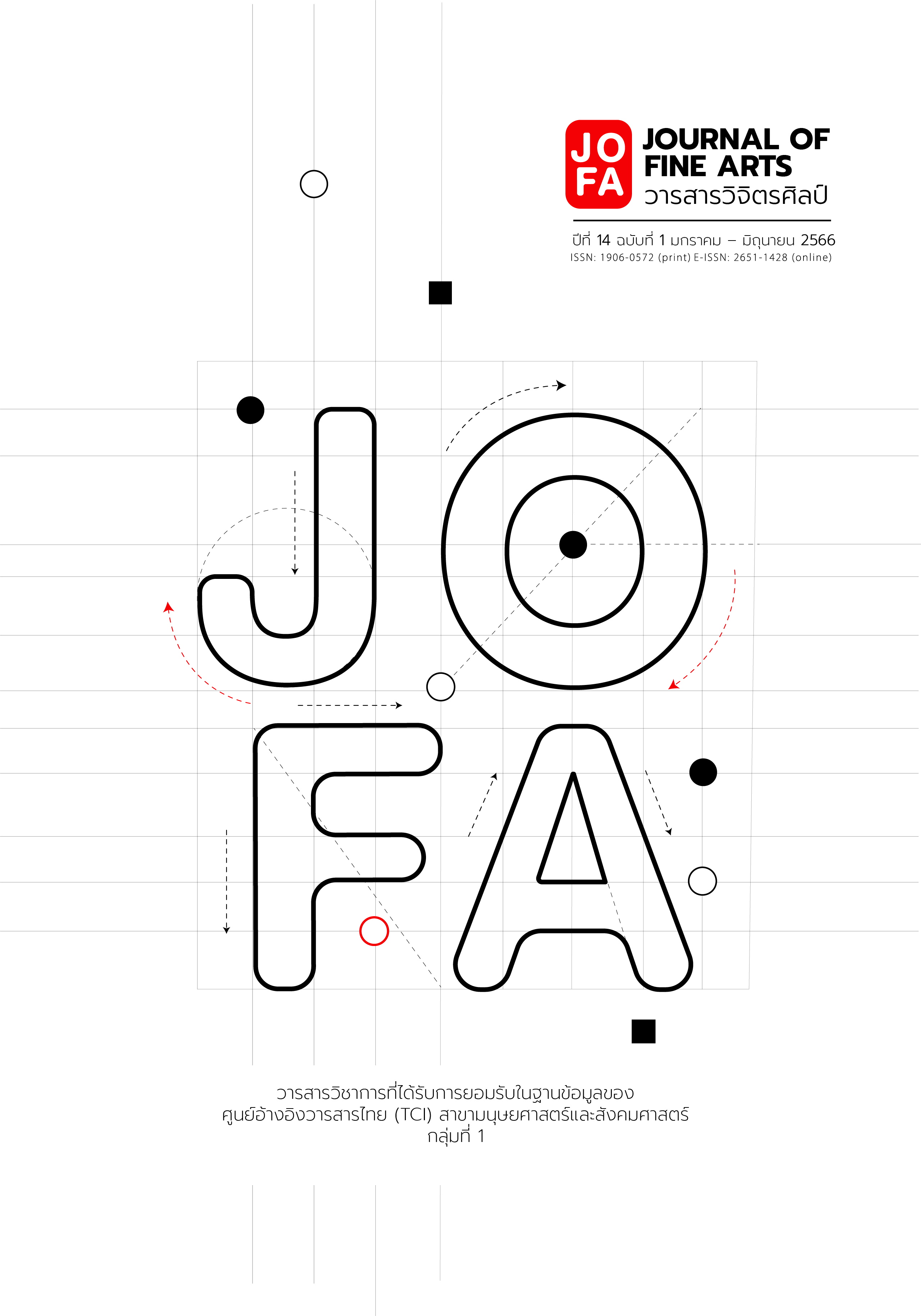Painting and Society
Main Article Content
Abstract
Conducting research under the project “Painting and Society”, author inspired by a series of knowledge in communicative painting language, social context in political terms and Buddhist philosophy. These 3 topics will be linked together and synthesized to reflect the truth of Buddhism by creating works of paintings that have the goal of demonstrating the results of concentration to seek power which is lust, the darkness in the human mind due to the change of status or the position changed to the point which has the highest authority in the administration of the country.
In addition to this research project, author have no intention of taunting, attacking, opposing or agreeing with the actions of any parties. But author have the idea to present the truth which is true according to the Buddhist philosophy which says “Passion can burn everything, even your innate virtues. And the last part of our lives, we cannot bring anything with us. On the other hand, what we can create and sustain is history of actions”. Therefore, if the leaders are aware of the Buddhist philosophy (suffering, impermanent and non-self), this is a tool to exercise power to govern the country, and then the country will be in a good direction, happy and becomes a civilized city as it should be. Moreover, incidents of violence and loss will not occur as it appears in the present situation. As above, interest in the function of the painting language that works with society in terms of recording reflect and unfold the story of society, especially politics that is combined with attitude and creation through 2 dimensions of international painting styles; Visual Art and Conceptual Art, presented through perspective combined with personal attitude, creative experience and knowledge based on Anthropology, Social Science and Philosophy of Buddhism.
Article Details

This work is licensed under a Creative Commons Attribution-NonCommercial-NoDerivatives 4.0 International License.
References
Anacamee, S. S. Phalang Sāngsan Čhāk Rǣng Bandān Čhai. [Creative Power of an Inspiration]. Bangkok: Siammiss Publishing House, 2012.
Chantavanich, S. Thritsadī Sangkhomwitthayā. [Sociological Theory]. Bangkok: Publisher of Chulalongkorn University, 2016.
Kaewthep, K. Sāt Hǣng Sư̄ Læ Watthanatham Sưksā. [Science and Media of Cultural Studies]. Bangkok: Edison Press Products, 2001.
Kunavichayanont, S. “To Thī Sipčhet Hō̜ng Rīan Prawattisāt (Thanon Rāt Damnœ̄n). [Table 17, Historical Classroom (Ratchadamnoen Road)].” Rama9Art. Accessed January 15, 2020. http://www.rama9art.org/sutee/09_history_class.html.
Nimsamer, C. Ongprakō̜p Khō̜ng Sinlapa Composition of Art. [Composition of Art]. Bangkok: Amarin, 2016.
Phra tham pidok. Phut tham. [Buddhism]. Bangkok: Mahachulalongkornrajavidyalaya University, 2013.
Saengkrachang, S. Sinlapa khư̄ ʻarai. [What is Art]. Bangkok: Openbook, 2008.
Sriwanichpoom, M. “Horror in Pink.” Photographers. Accessed January 15, 2020. http://www.photographers/photographer.php?id=197.
Tangchalok, I. Nǣothāng Kānsō̜n Læ Sāngsan Čhittrakam Khan Sūng. [Guidelines for Teaching and Creating Advanced Painting]. Bangkok: Amarin, 2007.


